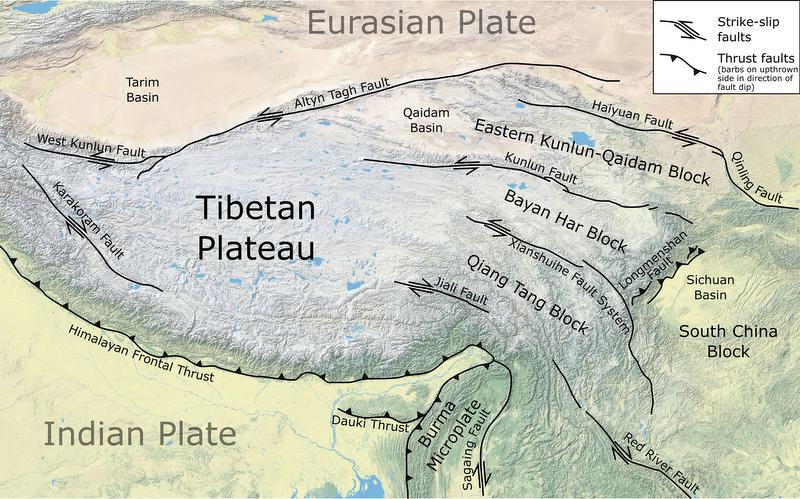Why in the News?
75 years ago on August 15, 1950, a magnitude 8.6 earthquake — the strongest recorded on land — struck Northeast India and surrounding regions.

About the Earthquake:
- Magnitude: 8.6, the strongest recorded earthquake on land.
- Impact Area: Tremors lasted 4–8 minutes, felt over 3 million sq. km in India, Myanmar, Bangladesh, Tibet, and South China.
- Casualties: Over 1,500 deaths in India and 4,000+ in Tibet; heavy livestock losses and infrastructure destruction.
- Secondary Disasters: Triggered landslides blocking rivers, followed by devastating flash floods.
Geological and Tectonic Setting:
- Epicentre: 40 km west of Rima (Zayu), near India–Tibet border in the Mishmi Hills.
- Tectonic Context: Located on Indian–Eurasian Plate boundary within Eastern Himalayan Syntaxis (EHS), influenced by the Sunda Plate.
- Fault Type: Strike-slip motion with thrust faulting — atypical for Himalayan quakes.
- Plate Convergence: Eastern Himalayas converge at 10–38 mm/year vs. ~20 mm/year elsewhere.
- Aftershocks: Indicated activation of multiple faults from the Syntaxial bend to Himalayan thrust faults in Arunachal Pradesh.
Lessons and Future Risks:
- Magnitude Potential: Confirms Himalayan segments can produce ≥8.6 magnitude events.
- Central Himalayan Risk: Identified as likely site for similar future quake.
- Vulnerability Today: Increased due to urbanisation and large infrastructure in seismic zones.
- Infrastructure Safety: Necessitates strict norms for dams and high-risk projects in Eastern Himalayas.
- Preparedness: Highlights need for seismic hazard mapping and disaster readiness.
| [UPSC 2024] Consider the following statements:
1. In a seismograph, P waves are recorded earlier than S waves. 2. In P waves, the individual particles vibrate to and fro in the direction of waves propogation whereas in S waves, the particles vibrate up and down at right angles to the direction of wave propagation. Which of the statements given above is/are correct? Options: (a) 1 only (b) 2 only (c) Both 1 and 2* (d) Neither 1 nor 2 |
Get an IAS/IPS ranker as your 1: 1 personal mentor for UPSC 2024

